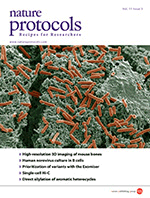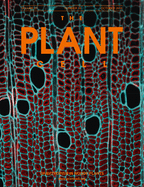 After reading too many papers that either are not reproducible or contain statistical errors (or both), the American Statistical Association (ASA) has been roused to action. Today the group released six principles for the use and interpretation of p values. P-values are used to search for differences between groups or treatments, to evaluate relationships between variables of interest, and for many other purposes. But the ASA says they are widely misused. Here are the six principles from the ASA statement: Continue reading We’re using a common statistical test all wrong. Statisticians want to fix that.
After reading too many papers that either are not reproducible or contain statistical errors (or both), the American Statistical Association (ASA) has been roused to action. Today the group released six principles for the use and interpretation of p values. P-values are used to search for differences between groups or treatments, to evaluate relationships between variables of interest, and for many other purposes. But the ASA says they are widely misused. Here are the six principles from the ASA statement: Continue reading We’re using a common statistical test all wrong. Statisticians want to fix that.
Category: unreliable findings
STAP stem cell researcher Obokata loses another paper
The first author of two high-profile Nature retractions about a technique to easily create stem cells has lost another paper in Nature Protocols.
Haruko Obokata, once “a lab director’s dream,” according to The New Yorker, also had her PhD revoked from Waseda University last fall.
After learning of concerns that two figures are “very similar” and “some of the error bars look unevenly positioned,” the rest of the authors were unable to locate the raw data, according to the note. The journal could not reach Obokata for comment before publishing the retraction.
“Reproducible subcutaneous transplantation of cell sheets into recipient mice” has been cited 21 times, according to Thomson Reuters Web of Science. It was published in June 2011, soon after Obokata earned her PhD.
Here’s the note:
Continue reading STAP stem cell researcher Obokata loses another paper
“We are living in hell:” Authors retract 2nd paper due to missing raw data
 A 2006 paper investigating the effects of docosahexaenoic acid (DHA) and celecoxib on prostate cancer cells has been retracted because it appears to contain panels that were duplicated, and the authors could not provide the raw data to show otherwise.
A 2006 paper investigating the effects of docosahexaenoic acid (DHA) and celecoxib on prostate cancer cells has been retracted because it appears to contain panels that were duplicated, and the authors could not provide the raw data to show otherwise.
This is the second paper the authors have lost because they couldn’t furnish the original data to defend their work against allegations of image manipulation. The reason: the Institute for Cancer Prevention in New York, where the authors did the work, shut its doors abruptly in 2004, co-author Bhagavathi A. Narayanan told us. (The institute closed thanks to $5.7 million in grant that was misspent, the New York Post reported at the time.)
Recently, some of Narayanan’s papers have been questioned on PubPeer; her work has been the subject of an investigation at New York University, where Narayanan is now based.
Narayanan told us that the criticism of their work has deeply affected her and her co-authors:
Continue reading “We are living in hell:” Authors retract 2nd paper due to missing raw data
Why publishing negative findings is hard

When a researcher encountered two papers that suggested moonlight has biological effects — on both plants and humans — he took a second look at the data, and came to different conclusions. That was the easy part — getting the word out about his negative findings, however, was much more difficult.
When Jean-Luc Margot, a professor in the departments of Earth, Planetary & Space Sciences and Physics & Astronomy at the University of California, Los Angeles, tried to submit his reanalysis to the journals that published the original papers, both rejected it; after multiple attempts, his work ended up in different publications.
Disagreements are common but crucial in science; like they say, friction makes fire. Journals are inherently disinterested in negative findings — but should it take more than a year, in one instance, to publish an alternative interpretation to somewhat speculative findings that, at first glance, seem difficult to believe? Especially when they contain such obvious methodological issues such as presenting only a handful of data points linking biological activity to the full moon, or ignore significant confounders?
Margot did not expect to have such a difficult experience with the journals — including Biology Letters, which published the study suggesting that a plant relied on the full moon to survive: Continue reading Why publishing negative findings is hard
Letter calls for retraction of yoga weight loss paper
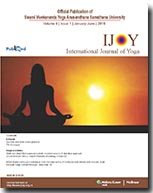 A paper concluding that a specific series of yoga poses is effective at promoting weight loss in obese women has a call for retraction in a letter to the editor of the International Journal of Yoga.
A paper concluding that a specific series of yoga poses is effective at promoting weight loss in obese women has a call for retraction in a letter to the editor of the International Journal of Yoga.
The study followed 87 women for 8 weeks as they completed a regular routine of yoga, circuit training, or walking on a treadmill. “Suryanamaskar: An equivalent approach towards management of physical fitness in obese females” concludes that
All three methods were effective in weight and physical fitness management.
But a group of heath researchers at the University of Alabama at Birmingham led by David Allison failed to replicate the statistical tests on some of the data. In a recent letter to the editor, “Unsubstantiated conclusions from improper statistical design and analysis of a randomized controlled trial,” they express skepticism about the paper’s claims, and ask the journal to retract it:
Continue reading Letter calls for retraction of yoga weight loss paper
List of retractions, corrections grows for Duke researchers
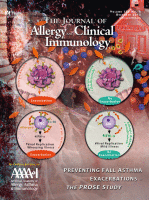 Duke researcher Michael Foster and his former co-author Erin Potts-Kant are adding to their notice count with a major correction from late last year to a paper on how certain cells in mice respond to a pneumonia infection, citing “potential discrepancies in the data.”
Duke researcher Michael Foster and his former co-author Erin Potts-Kant are adding to their notice count with a major correction from late last year to a paper on how certain cells in mice respond to a pneumonia infection, citing “potential discrepancies in the data.”
The correction is actually a partial retraction: The note explains that parts of three figures should be discounted.
We’ve also recently unearthed multiple corrections and two retractions from the pair that we missed from earlier in 2015.
After questions about the data in the corrected paper arose, the authors were able to replicate most of the experiments in the paper, according to the note. But since the paper was published, the senior author passed away, closing her lab, so they couldn’t repeat all of the work.
Here’s the correction notice for “Mast cell TNF receptors regulate responses to Mycoplasma pneumoniae in surfactant protein A (SP-A)−/− mice,” published in The Journal of Allergy and Clinical Immunology:
Continue reading List of retractions, corrections grows for Duke researchers
Paper on plant immunity can’t fight off manipulation
A paper on how plants respond to bacteria has an invader of its own — data manipulation.
The “irregularities and inappropriate data manipulation” were found in a figure produced by the first author, Ching-Wei Chen, whose LinkedIn page lists him as a student at the National Taiwan University. The authors were unable to replicate the results in the figure, according to the note.
The authors are doing more experiments to verify the main conclusion of the 2014 paper, “The Arabidopsis Malectin-Like Leucine-Rich Repeat Receptor-Like Kinase IOS1 Associates with the Pattern Recognition Receptors FLS2 and EFR and Is Critical for Priming of Pattern-Triggered Immunity,” published in The Plant Cell.
The retraction note explains the what happened in more detail:
Continue reading Paper on plant immunity can’t fight off manipulation
Misidentified DNA leads authors to retract zebrafish cholesterol paper
Authors are retracting a 2012 paper on cholesterol metabolism in zebrafish after realizing it included a case of mistaken identity in a DNA sequence crucial to some aspects of the experiment.
A postdoc misidentified the plasmid in question after failing to fully sequence it before including it in the experiment. A technician in the lab found the mistake, last author Steven Farber, a researcher at the Carnegie Institution for Science in Maryland, explained:
When the omitted region was correctly sequenced we discovered it had an error.
He told us in a phone interview what that felt like:
We were like, holy crap.
Next came months of back and forth with the journal, discussing whether to correct or retract the paper. Farber tells us the mistake, which affects two figures,
was unfortunate. Most of the paper is in fact correct.
The paper, “Visualization of Lipid Metabolism in the Zebrafish Intestine Reveals a Relationship between NPC1L1-Mediated Cholesterol Uptake and Dietary Fatty Acid,” published in Chemistry & Biology, has been cited 21 times, according to Thomson Scientific’s Web of Knowledge.
Here’s the detailed retraction note: Continue reading Misidentified DNA leads authors to retract zebrafish cholesterol paper
Prostate cancer paper retracted after investigation can’t review original image
 An article about how a COX-2 inhibitor (celecoxib) inhibits growth of prostate cancer in rats is being retracted after the authors were unable to provide an investigation committee at New York University with the backup they were asking for.
An article about how a COX-2 inhibitor (celecoxib) inhibits growth of prostate cancer in rats is being retracted after the authors were unable to provide an investigation committee at New York University with the backup they were asking for.
When the paper was published in 2003, first author Bhagavathi Narayanan worked at the Institute for Cancer Prevention in New York (also known as the American Health Foundation). But when the institute went broke the next year — thanks partly to lavish salaries and offices, as the New York Post reported — the authors claim they could no longer obtain back up for an image in the paper, once it was questioned years later by NYU, where Narayanan is now based.
Here’s the retraction note, published in Clinical Cancer Research:
Continue reading Prostate cancer paper retracted after investigation can’t review original image
Nature retracts paper six years after it was flagged for fraud
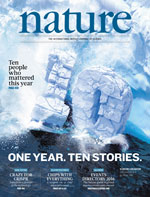 Nature retracted a paper on protein structures today, six years after an investigation at the University of Alabama identified several structures that were “more likely than not falsified and/or fabricated” by one of the authors.
Nature retracted a paper on protein structures today, six years after an investigation at the University of Alabama identified several structures that were “more likely than not falsified and/or fabricated” by one of the authors.
The paper came under scrutiny soon after it was published in 2006. A letter published in Nature that same year pointed out “physically implausible features in the structures it described.” That triggered the investigation at the University of Alabama, the result of which was published in 2009, identifying “nine publications related to the same protein structures that should be retracted from various scientific journals.” Everything was pinned on last author H.M. Krishna Murthy, who the investigation determined was “solely responsible for the fraudulent data.”
A 2009 Nature news article on the investigation declared that the “fraud is the largest ever in protein crystallography.”
We’re not sure what took Nature so long to retract the letter, titled “The structure of complement C3b provides insights into complement activation and regulation.” Here’s the note, which explains that not all the authors agreed to the retraction:
Continue reading Nature retracts paper six years after it was flagged for fraud
